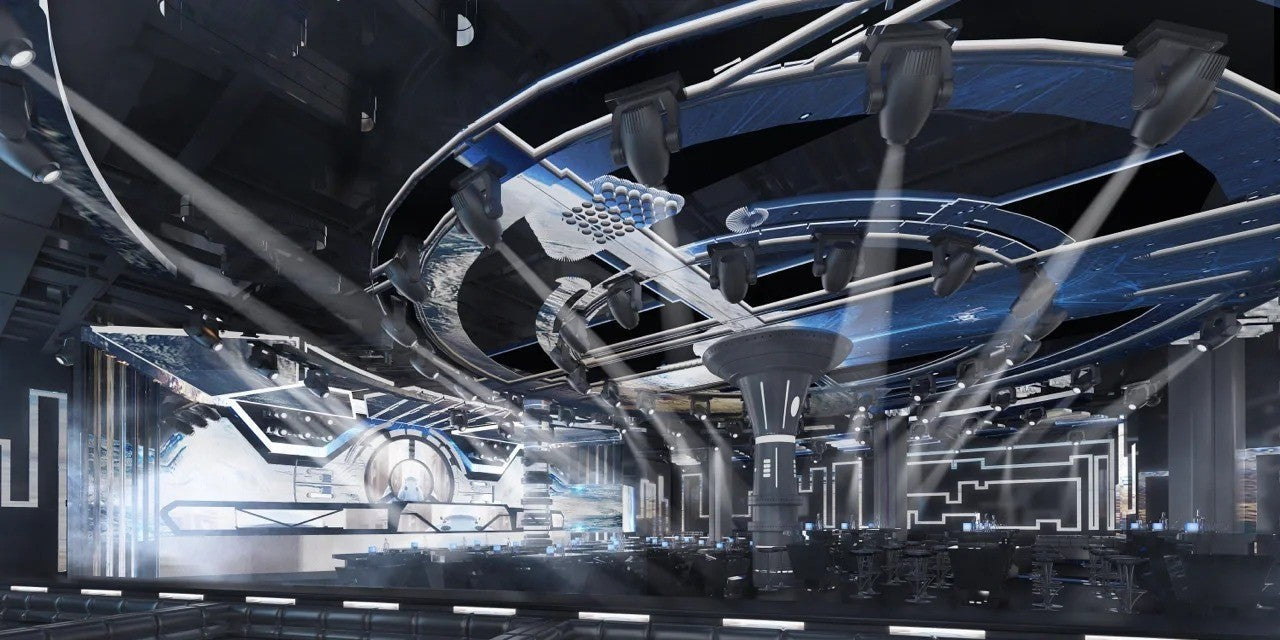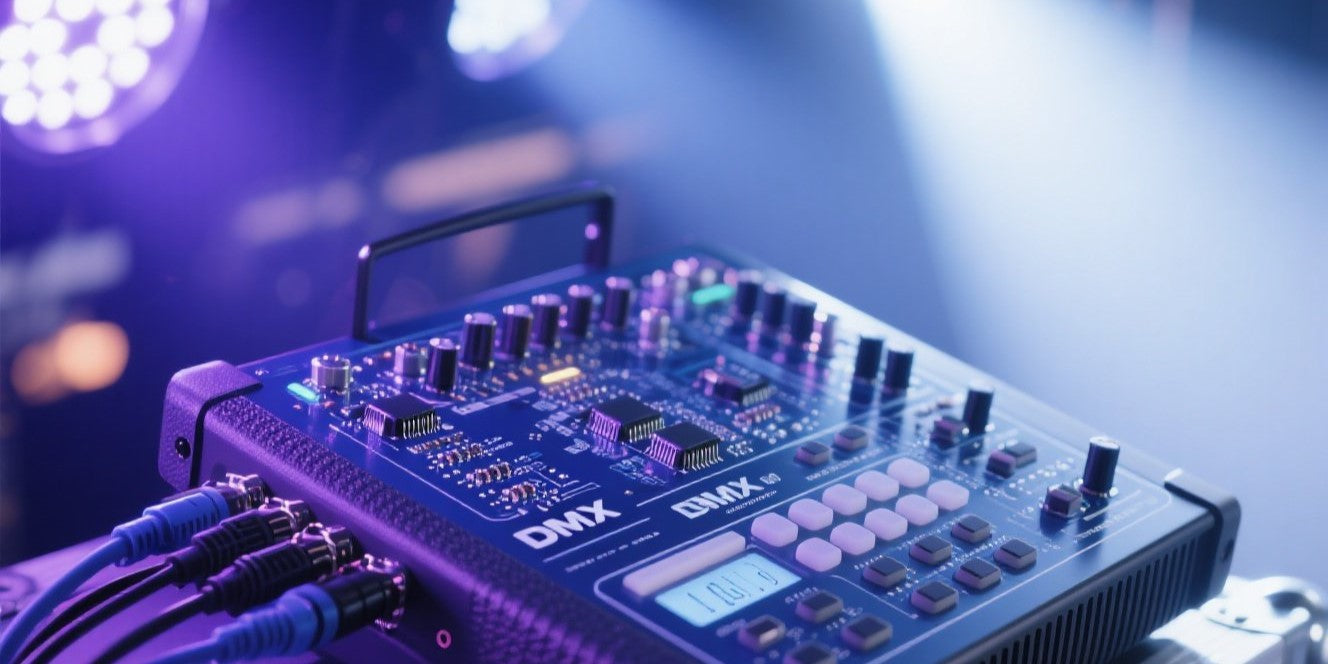"Hai problemi con luci tremolanti, volti sbiaditi o immagini piatte durante il culto? Scopri come risolvere i problemi di illuminazione più comuni in chiesa con scelte progettuali più intelligenti. In questa guida, trattiamo l'illuminazione principale, la configurazione dell'ambiente, gli apparecchi adatti alle telecamere e forniamo consigli pratici per gli ambienti di culto moderni."
Perché l'illuminazione delle chiese deve essere ripensata
In molte chiese, la persona che supervisiona gli impianti tecnici è anche responsabile dell'illuminazione, perché l'illuminazione non è un elemento isolato. Funziona come parte di un ambiente coordinato, influenzando direttamente la definizione spaziale, la gerarchia visiva e il coinvolgimento del pubblico.
Che la progettazione dell'illuminazione sia o meno la tua competenza principale, ora sei responsabile del modo in cui la luce si integra con il suono, le immagini e il movimento per garantire chiarezza del messaggio, ritmo emotivo e stabilità operativa.
E non è un compito da poco. L'illuminazione della chiesa deve rendere visibile l'oratore, evitare di accecare la prima fila, mantenere un ambiente calmo e agevolare le transizioni senza attirare l'attenzione su di sé.
Ma la maggior parte dei sistemi non è stata progettata per questo. Gli apparecchi sfarfallano. Ronzano. Si inceppano o riducono lo spazio a un campo visivo piatto. E quando ciò accade, l'attenzione si sposta e il messaggio perde il suo impatto.

Cosa stai realmente illuminando? Tre priorità visive nell'adorazione
L'illuminazione di una chiesa non serve solo a rendere visibili gli oggetti, ma anche a guidare l'attenzione. Uno spazio ben illuminato, senza una gerarchia visiva, lascia il pubblico incerto su dove guardare. Il tuo compito non è inondare il santuario di luce, ma definire la struttura visiva e rafforzare ciò che conta in ogni momento.
Nella maggior parte dei servizi, ci sono tre priorità visive da gestire:
L'oratore o il leader del culto
Questo è il punto fermo del tuo progetto di illuminazione. Deve essere chiaramente visibile da ogni posto, ma non sbiadito. Utilizza l'illuminazione principale per modellare il viso, preservare il tono naturale della pelle e separare il soggetto dallo sfondo.
Utilizzare un apparecchio COB con CRI elevato e bianco regolabile:LC500.
L'ambiente di culto
Un rifugio completamente buio o uniformemente luminoso manca di profondità e connessione. Un'illuminazione ambientale soffusa, come luci soffuse o luci architettoniche dal basso, può contribuire a modellare lo spazio e creare calore senza distogliere l'attenzione dalla piattaforma.
In questo caso, gli apparecchi compatti con alette e bordi morbidi funzionano bene:LPC010-B.
La vista della telecamera
Anche senza streaming live, la maggior parte delle chiese utilizza video per registrazioni o IMAG. L'illuminazione dovrebbe mantenere la separazione tra soggetto e sfondo e una gamma tonale uniforme. Evitare temperature miste e punti caldi che possono distorcere l'immagine.
Cerca apparecchi RGBW con dimmerazione graduale e alta fedeltà dei colori:LPC120.
Cosa non va nell'illuminazione della chiesa e perché
- Toni della pelle innaturali
Gli apparecchi senza emettitori bianchi o ambra calibrati producono spettri incompleti. Questo distorce i toni della pelle, soprattutto inquadrati, causando variazioni innaturali di verde, blu o colori eccessivamente saturi. - Profondità visiva ridotta
Quando il soggetto e lo sfondo sono illuminati con la stessa intensità e temperatura di colore, la separazione spaziale scompare. Il risultato è un'immagine piatta, senza gerarchia visiva, che riduce sia la messa a fuoco che l'impatto. - Washout della proiezione
Le luci diffuse sulla superficie di proiezione riducono il contrasto e aumentano i livelli di nero. Anche una luce diffusa soffusa può rendere difficili da leggere testi e immagini, non per la luminosità, ma per la degradazione del contrasto. - Distrazioni ambientali
Il rumore delle ventole, lo sfarfallio del PWM o le modalità audio-attive scarsamente filtrate possono creare movimenti o ronzii indesiderati. Negli ambienti di culto silenziosi, queste piccole interruzioni diventano molto evidenti. - Incoerenza della scena e deriva della sincronizzazione
Senza una logica preimpostata o un raggruppamento di apparecchi, i volontari devono regolare le luci manualmente. Questo causa un aspetto non uniforme, transizioni scadenti e aumenta il rischio di errori di tempistica, soprattutto durante le funzioni religiose in diretta.
Linee guida pratiche per l'illuminazione durante il culto
Suggerimenti pratici per l'installazione:
Angolo di luce chiave
Posizionare le luci principali con un angolo orizzontale di 30-45° e un'inclinazione verticale di 20-30°. Questo riduce al minimo le ombre ed evita riflessi abbaglianti.
Posizionamento della retroilluminazione
Posizionare luci d'accento o luci dal basso a livello del pavimento o di una trave bassa, puntate verso l'alto a 10-20°, con un'emissione luminosa ridotta. Le tonalità più fredde contribuiscono ad aggiungere profondità senza distogliere l'attenzione.
Evita gli errori comuni
Non puntare tutti gli apparecchi direttamente verso di te: questo appiattisce le caratteristiche.
Non utilizzare la stessa temperatura di colore in tutte le zone.
Non fare affidamento sulla modalità audio a meno che non sia filtrata e testata in condizioni di silenzio.
Il controllo è importante tanto quanto il posizionamento
Che si utilizzi una console luci, un richiamo di scena o un sistema automatico di logica, la chiave è la coerenza. Ogni luce deve partire nella posizione corretta, rispondere in modo prevedibile e supportare le transizioni in modo fluido, senza sbalzi improvvisi o tentativi di indovinare sotto pressione.
Configurazione dell'illuminazione che riflette le reali esigenze delle chiese
betopper ha progettato i suoi apparecchi con un obiettivo in mente: rendere l'illuminazione della chiesa più silenziosa, più chiara e più facile da gestire, senza dover ricorrere a un tecnico a tempo pieno.
Ecco una configurazione consigliata che riflette questo pensiero:
- LPC120 Lavaggio ×4 — Elevato CRI, emissione di luce bianca calda per un'illuminazione chiara e naturale dei punti chiave per pastori, relatori e leader del culto
- LPC010N Faretto da appoggio ×4 — Illuminazione di sfondo stabile e silenziosa per definire pareti, croci o tende con separazione sicura per la telecamera
- LC500 Ambra/CW Riempimento ×2 — Accenti ambientali morbidi per sollevare l'atmosfera e aggiungere calore senza introdurre movimento o abbagliamento
Questa configurazione garantisce una copertura calma, profondità visiva e attenzione liturgica: silenziosa, stabile e pronta sia per il culto in presenza che per quello trasmesso.
La migliore illuminazione per una chiesa non è quella che attira l'attenzione su di sé.
Fa sì che ogni momento sembri e si senta giusto, in modo coerente, silenzioso e senza stress.
Scopri altri sistemi di illuminazione realizzati per il culto presso https://betopperdj.com




Lascia un commento
Nota che i commenti devono essere approvati prima di essere pubblicati.
Questo sito è protetto da hCaptcha e applica le Norme sulla privacy e i Termini di servizio di hCaptcha.